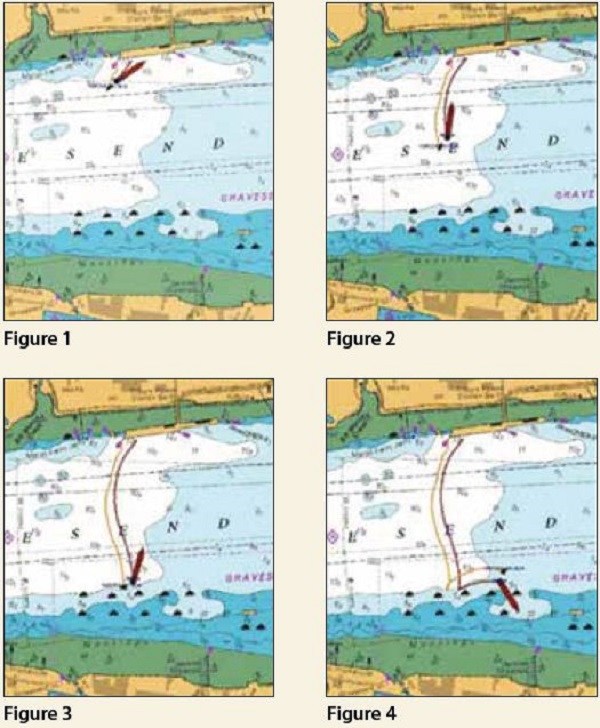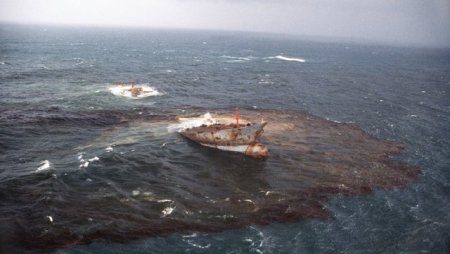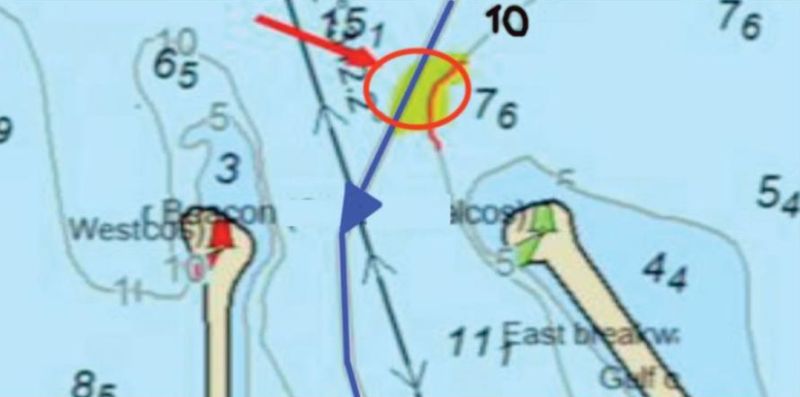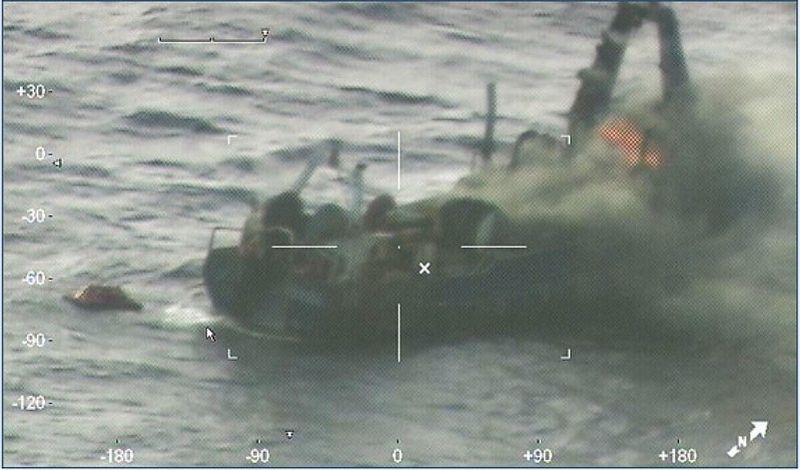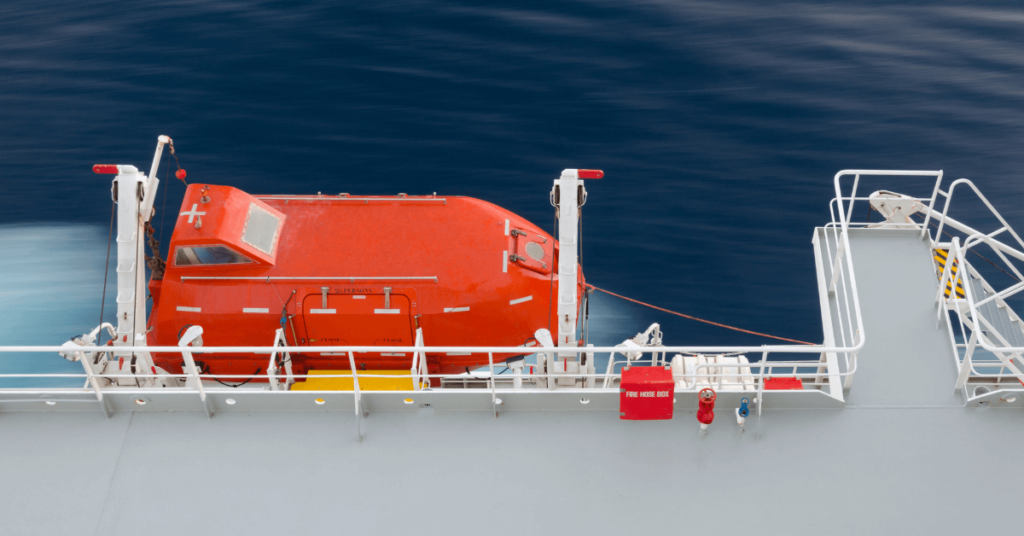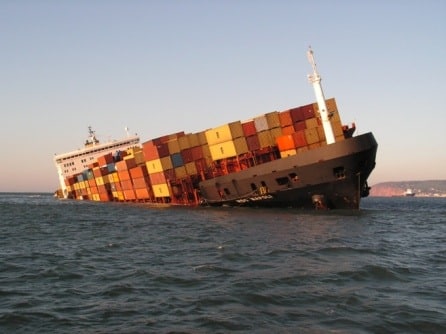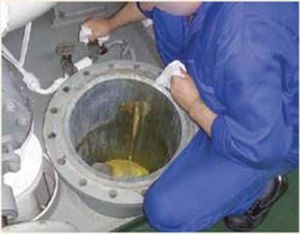Real Life Accident: Vessel Makes Contact and Runs Aground Under Pilotage Due to Restricted Visibility
The Master and pilot discussed the plan for unmooring and departure. They agreed that the forward spring would be the last mooring rope to be let go and that the vessel would then move sternfirst into the fairway. The tug would be made fast at the stern and would assist the vessel into the centre of the river.
The tug would be released once the vessel was clear of the jetty and making headway downriver. Initially, the fog had been quite thick and had delayed departure. Later, some improvement was seen so the vessel’s crew began to single up the vessel’s mooring lines and the pilot informed Vessel Traffic Services (VTS) that the vessel was preparing to leave the berth. At the time the tidal current was easterly two to three knots.
At departure the Master and pilot were on the port bridge wing. The OOW was operating both the helm and the engine telegraph, which was being responded to by the engine room crew. The duty helmsman was with the aft mooring party as the vessel left the berth. At 0551 (Figure 1) the Master and pilot entered the wheelhouse: the pilot ordered the engine to slow astern and the vessel’s speed over the ground (SOG) increased to 2.1 knots on a course over the ground (COG) of 210 degrees.
Two minutes later, the vessel’s engine was stopped and the pilot ordered ‘dead-slow-ahead’ and the helm hard-to-starboard: the SOG was 4.0 knots and COG 171 degrees (Figure 2). The pilot requested the tug to pull on the port quarter at 25% power and 40 seconds later ordered the tug to increase to 50% power. Soon afterward, the pilot ordered the engine to slow-ahead and a few seconds later to half-ahead.
At 0555, VTS warned the vessel’s pilot by VHF that the vessel was south of the fairway (Figure 3). The pilot then ordered the engine to full ahead and for the OOW to steer a heading of 073 degrees. A minute later the pilot ordered the helm to be put hard to port and the engine to full ahead. He then instructed the tug to stop pulling and to take up station on the port quarter. At 0557 the vessel was swinging quickly to starboard; the pilot again ordered the helm hard-to-port, the engine to full ahead and the OOW to steer a heading of 071 degrees. The pilot then called VTS and reported that the vessel’s engine was not responding. VTS asked if the vessel required assistance, to which the pilot requested a second tug.
At 0558 (Figure 4) the vessel was continuing to swing to starboard at 3.5 knots SOG, the helm was hard-to-port and the engine was set to full-ahead, when the helmsman arrived on the bridge to replace the OOW at the helm. At about this time the Master informed the pilot that the vessel’s engine was working normally and that he had instructed the engineers to increase power to full sea speed. By 0600 the vessel made contact with moored barges on the south side of the river before running aground.
Some of the important findings from the official report were:
- The need to check on roles and responsibilities [is paramount]. Had this been done, it is probable that an officer would have been allocated to maintain a radar watch during the vessel’s departure.
- This accident was characterised by poor communications. These can be attributed to the initial failure at the briefing stage to assign appropriate roles and responsibilities within the bridge team to manage a port departure in restricted visibility. This in turn resulted in poor situational awareness and in team members acting in isolation, without fully communicating their actions to the other team members or the assisting tug.
- The use of the tug, in circumstances where [the pilot] had no visual references, resulted in a disproportionate effect being applied that turned the vessel some 90 degrees more than intended so that the vessel drove out of the channel and grounded before he could assess and recover the situation.
Reference & Image Credits: nautinst
Do you have info to share with us ? Suggest a correction
- Real Life Incident: Vessel Collision in Good Visibility
- Real Life Incident: Severe Injury To Deck Crew While Leaving Berth
- Real Life Incident: Departure Damage in Very Restricted Waterway
- Real Life Incident: Low Situational Awareness Has High Impact Consequence
- Real Life Incident: Fouled Anchor in a Designated Anchorage
- Real Life Incident: Fire On Barge Carrying Scrap Metal Causes $7 Million Worth Of Damage
Latest Case studies Articles You Would Like:
Subscribe To Our Newsletters
By subscribing, you agree to our Privacy Policy and may receive occasional deal communications; you can unsubscribe anytime.
Web Stories



